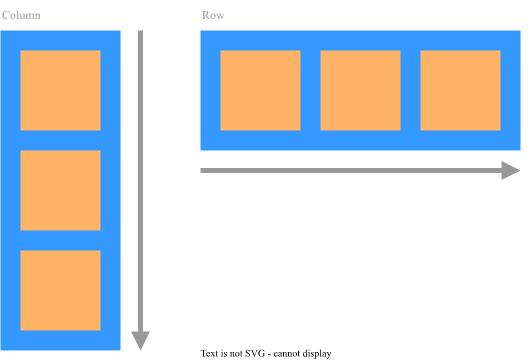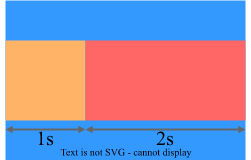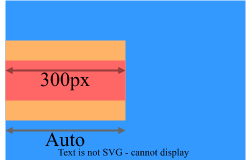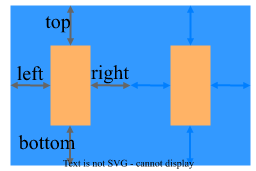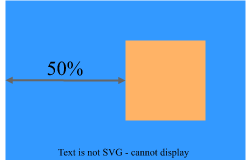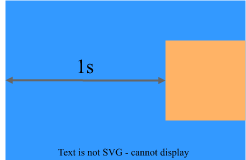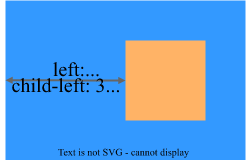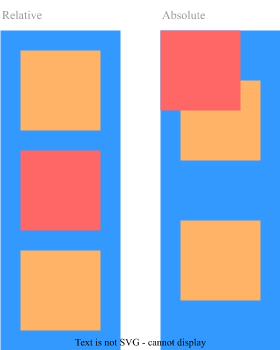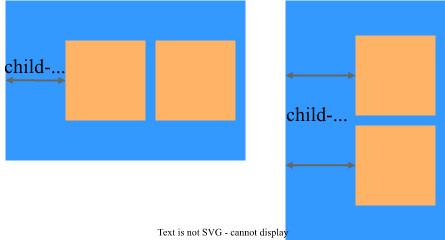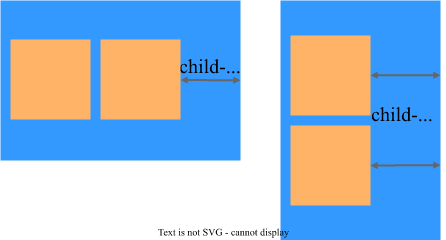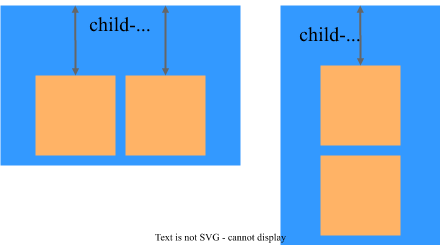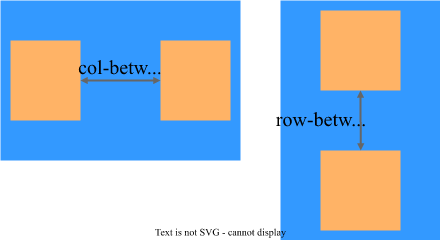9 unstable releases
| 0.7.0 | Apr 16, 2025 |
|---|---|
| 0.6.5 | Nov 28, 2024 |
| 0.6.4 | Nov 8, 2023 |
| 0.6.2 | Oct 22, 2023 |
| 0.1.0 | Jul 17, 2021 |
#87 in GUI
1,030 downloads per month
Used in 16 crates
(6 directly)
145KB
1K
SLoC
Morphorm
Morphorm is a crate for efficiently determining the size and position of UI elements which are organized into a tree structure.
Description
Morphorm is a 'one-pass' algorithm which recurses down the layout tree (depth-first), and determines the position and size of nodes based on their parent and children. It can produce similar layouts to flexbox, but with fewer concepts that need to be learned.
Layout Type
The layout type property determines how children of a node will be arranged. There are two variants:
LayoutType::Row- The node will arrange its children into a horizontal row.LayoutType::Column- The node will arrange its children into a vertical column.
Size
The size of a node is determined by its width and height properties. These properties are specified with Units, which has four variants:
Units::Pixels(val)- Sets the size to a fixed number of pixels.
Units::Percentage(val)- Sets the size to a percentage of the nodes parent size.
Units::Stretch(factor)- Sets the size to a proportion of the free space of the parent within the same axis.
Units::Auto- Sets the size to either hug the nodes children, or to inherit the content size of the node.
Content Size
Content size is used to determine the size of a node which has no children but may have an intrinsic size due to contents which do not correspond to nodes in the layout tree. For example, a node which contains text has an intrinsic size of the bounds of the text, which may introduce a dependency between the width and height (i.e. when text wraps). Similarly, content size can be used to size a node with a particular aspect ratio by constraining the height to be some proportion of the width (or conversely).
Space
The position of a node within a stack can be adjusted by the spacing applied to each of its four sides:
left- The space that should be applied to the left side of the node. This takes precedent overrightspacing.right- The space that should be applied to the right side of the node.top- The space that should be applied to the top side of (above) the node. This takes precedent overbottomspace.bottom- The space that should be applied to the bottom side of (below) the node.
Spacing is specified with Units, which has four variants:
Units::Pixels(val)- Sets the spacing to a fixed number of pixels.
Units::Percentage(val)- Sets the spacing to a percentage of the nodes parent size.
Units::Stretch(factor)- Sets the spacing to a proportion of the free space of the parent within the same axis.
Units::Auto- Sets the spacing to inherit the child spacing of the parent.
Position Type
The position type property determines whether a node should be positioned in-line with its siblings in a stack, or out-of-line and independently of its siblings. There are two variants:
Position::Relative- The node will be positioned relative to its in-line position with its siblings.Position::SelfDirected- The node will be positioned out-of-line and relative to the top-left corner of its parent.
Self directed nodes do not contribute to the size of the parent when the parent size is set to auto.
Child Space
The child space of a node applies space around its children by overriding the individual auto spacing of the nodes children and is also specified with Units.
child_left- The space that should be applied between the left side of the view and its children with individualAutoleft spacing. Applies to all children in a vertical stack and to the first child in a horizontal stack.
child_right- The space that should be applied between the right side of the view and its children with individualAutoright spacing. Applies to all children in a vertical stack and to the first child in a horizontal stack.
child_top- The space that should be applied between the top side of the view and its children with individualAutotop spacing. Applies to all children in a horizontal stack and to the first child in a vertical stack.
child_bottom- The space that should be applied between the bottom side of the view and its children with individualAutobottom spacing. Applies to all children in a horizontal stack and to the first child in a vertical stack.
There are two additional child-spacing properties for setting the space between child nodes:
row-between- The space that should be applied between the children within aColumnlayout. Works by overriding the individualtopandbottomspacing of the children if they are set toAuto.col-between- The space that should be applied between the children within aRowlayout. Works by overriding the individualleftandrightspacing of the children if they are set toAuto.
Constraints
All spacing and size properties can be constrained with corresponding minimum and maximum properties, which are also specified using Units. For example, the width of a node can be constrained with the min_width and max_width properties.
Specifying a minimum size of Auto will cause the node to be at least as large as its contents.
How to use
To try and keep things as generic as possible Morphorm does not provide any containers for representing the layout properties or the tree. Instead, two traits must be implemented by the users' containers in order to utilize the layout algorithm:
Noderepresents a UI element which can be sized and positioned. The node itself could contain the desired layout properties, or the properties can be provided by an external source (such as an ECS component store), which is provided by theStoreassociated type. The node must also provide an iterator over its children, specified by theChildIterassociated type, and to allow the children to be stored externally as well, there is aTreeassociated type. Additionally, there is aSubLayoutassociated type which can be used to provide an external context when the size of a childless node is determined by its content, for example it may be used to provide a context for computing and caching the bounds of text within a node.Cacherepresents a store for the output of the layout computation. The store is indexed by a reference to the node type, however, to allow store types which cannot use the node reference as a key, theNodetrait also provides aCacheKeyassociated type.
Example (ECS)
In the following example, nodes are represented by an ID type, which is used as a key for slotmaps which store the properties of a layout node.
Creating an ID type
First we define an Entity type to act as the ID:
#[derive(Debug, Clone, Copy, PartialEq, Eq, Hash, PartialOrd, Ord)]
pub struct Entity(pub usize);
We then create a simple entity manager which generates new entities. For this simple example the entity ID is generated from a counter, but a real system may need to handle the removal of entities.
pub struct EntityManager {
count: usize,
}
impl EntityManager {
pub fn create(&mut self) -> Entity {
self.count += 1;
Entity(self.count - 1)
}
}
Next we'll implement the Key trait and the From<KeyData> trait so that the entity can be used as a key for a SecondaryMap from the slotmap crate:
unsafe impl Key for Entity {
fn data(&self) -> slotmap::KeyData {
KeyData::from_ffi(self.0 as u64)
}
fn null() -> Self {
Entity::default()
}
fn is_null(&self) -> bool {
self.0 == usize::MAX
}
}
impl From<KeyData> for Entity {
fn from(value: KeyData) -> Self {
Entity(value.as_ffi() as usize)
}
}
Defining the Tree
One way to represent the layout tree using an ID type is to store the parent, first-child, and next/prev -sibling IDs for each entity:
pub struct Tree {
pub parent: Vec<Option<Entity>>,
pub first_child: Vec<Option<Entity>>,
pub next_sibling: Vec<Option<Entity>>,
pub prev_sibling: Vec<Option<Entity>>,
}
See ecs/tree.rs for full implementation.
An iterator over the children of a node can then be constructed:
/// An iterator for iterating the children of an entity.
pub struct ChildIterator<'a> {
pub tree: &'a Tree,
pub current_node: Option<&'a Entity>,
}
impl<'a> Iterator for ChildIterator<'a> {
type Item = &'a Entity;
fn next(&mut self) -> Option<Self::Item> {
if let Some(entity) = self.current_node {
self.current_node = self.tree.get_next_sibling(entity);
return Some(entity);
}
None
}
}
Defining the Store
Let's now create a store type which, as the name suggests, will store the properties of a node:
pub struct PropertyStore {
pub visible: SecondaryMap<Entity, bool>,
pub layout_type: SecondaryMap<Entity, LayoutType>,
pub position_type: SecondaryMap<Entity, Position>,
pub left: SecondaryMap<Entity, Units>,
pub right: SecondaryMap<Entity, Units>,
pub top: SecondaryMap<Entity, Units>,
pub bottom: SecondaryMap<Entity, Units>,
...
}
See ecs/store.rs for full implementation.
Defining the Cache
Next, we'll need a cache to store the output of the layout computation, also keyed by the entity ID:
pub struct NodeCache {
// Computed size and position of nodes.
pub rect: SecondaryMap<Entity, Rect>,
}
Then we'll implement the Cache trait on it:
impl Cache for NodeCache {
type Node = Entity;
fn set_bounds(&mut self, node: &Self::Node, posx: f32, posy: f32, width: f32, height: f32) {
if let Some(rect) = self.rect.get_mut(*node) {
rect.posx = posx;
rect.posy = posy;
rect.width = width;
rect.height = height;
}
}
fn width(&self, node: &Self::Node) -> f32 {
if let Some(rect) = self.rect.get(*node) {
return rect.width;
}
0.0
}
...
}
Implementing the Node trait
We can now implement the Node trait for Entity type, filling in the associated types:
impl Node for Entity {
type Store = Store;
type Tree = Tree;
type ChildIter<'t> = ChildIterator<'t>;
type CacheKey = Entity;
type SubLayout<'a> = ();
fn key(&self) -> Self::CacheKey {
*self
}
fn children<'t>(&self, tree: &'t Tree) -> Self::ChildIter<'t> {
let current_node = tree.get_first_child(self);
ChildIterator { tree, current_node }
}
fn visible(&self, store: &Store) -> bool {
store.visible.get(*self).copied().unwrap_or(true)
}
fn layout_type(&self, store: &Store) -> Option<LayoutType> {
store.layout_type.get(*self).copied()
}
}
Because the node is just an ID, we can use itself for the CacheKey. For this example we've left the Sublayout type as empty, but a real system might use this for a text context. Each 'getter' function, such as layout_type(), retrieves its returned value from the Store.
Performing layout
Finally, layout can be performed on the whole tree via the root node:
root.layout(&mut cache, &tree, &store, &mut sublayout);
Not shown here is the construction of the tree prior to calling layout. See ecs/world.rs and examples/basic.rs for implementation details.
